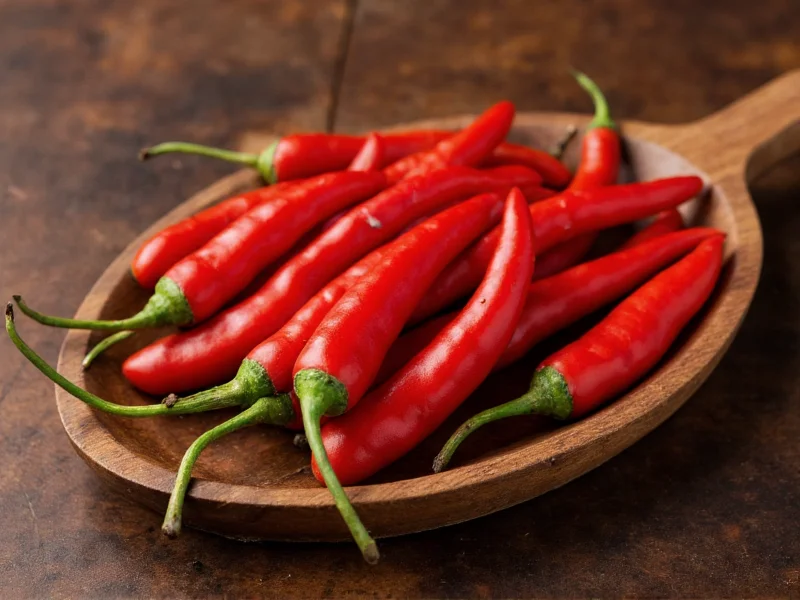Chipotle peppers, which are essentially smoked and dried jalapeños, occupy a distinctive place in the world of spicy ingredients. Understanding their heat level helps home cooks and culinary professionals use them effectively without overwhelming dishes. While definitely spicy, chipotle peppers fall in the medium range of the Scoville scale, making them accessible to most palates when used appropriately.
What Makes Chipotle Peppers Hot
The heat in chipotle peppers comes from capsaicin, the same compound found in all chili peppers. When jalapeños ripen to red maturity and are then smoked and dried to become chipotles, the capsaicin concentration becomes more pronounced. This process doesn't increase the absolute amount of capsaicin, but it does concentrate the flavor and heat by removing moisture.
Several factors influence the actual heat level you'll experience:
- Ripeness at harvest: Fully red jalapeños (used for chipotles) tend to be hotter than green ones
- Smoking duration: Longer smoking can intensify perceived heat
- Seeds and membranes: Most capsaicin resides in these parts, so recipes using whole peppers versus just the adobo sauce differ significantly in heat
- Growing conditions: Soil, climate, and water stress affect capsaicin production
| Pepper Type | Scoville Heat Units | Heat Comparison |
|---|---|---|
| Chipotle Pepper | 2,500-8,000 SHU | Medium heat |
| Jalapeño (fresh) | 2,500-8,000 SHU | Same base pepper |
| Serrano | 10,000-23,000 SHU | 2-3x hotter than chipotle |
| Habanero | 100,000-350,000 SHU | 15-40x hotter than chipotle |
| Poblano | 1,000-2,000 SHU | Milder than chipotle |
How Chipotle Heat Compares to Fresh Jalapeños
Since chipotles are made from jalapeños, many wonder: are chipotle peppers hotter than jalapeños? The answer requires nuance. On the Scoville scale, they occupy the same numerical range (2,500-8,000 SHU), but the smoking process creates a different heat experience.
The smoke adds complexity that can make the heat feel more intense initially, though it often mellows into a deeper, more rounded spiciness. Many people perceive chipotles as slightly hotter than fresh red jalapeños due to this concentrated flavor profile. When comparing canned chipotle peppers in adobo sauce versus fresh jalapeños, the liquid in the can often absorbs significant capsaicin, making the sauce itself quite spicy even if the peppers seem milder.
Managing Chipotle Pepper Heat in Cooking
Understanding how hot chipotle peppers are helps you control their impact in recipes. Here are practical tips for working with their heat level:
- Start small: Begin with half a pepper or even just a teaspoon of adobo sauce, then adjust to taste
- Remove seeds and membranes: These contain most capsaicin; scraping them out significantly reduces heat
- Balance with dairy: Yogurt, sour cream, or cheese can counteract excessive heat
- Use acid to moderate: A splash of lime juice can help balance perceived spiciness
- Consider preparation method: Blending chipotles distributes heat more evenly than chopping
For those sensitive to spice, understanding chipotle pepper heat measurement helps make informed choices. The adobo sauce in canned chipotles often carries more heat than the peppers themselves, as capsaicin dissolves in the liquid. If you're wondering how hot are chipotle peppers compared to other smoked options, they're milder than smoked habaneros but hotter than smoked bell peppers (which have zero heat).
Common Misconceptions About Chipotle Heat
Several myths persist about chipotle pepper spiciness. Some believe the smoking process dramatically increases heat, but it primarily concentrates existing capsaicin rather than creating more. Others think all canned chipotles have identical heat levels, when in reality there's significant batch-to-batch variation based on the original jalapeños' ripeness and growing conditions.
When exploring how hot are chipotle peppers really, remember that personal heat tolerance varies widely. What seems mild to one person might feel quite spicy to another. This subjectivity explains why many recipes specify "to taste" when calling for chipotles. The distinctive smoky flavor often makes chipotles feel more intense than their Scoville rating suggests, as the smoke compounds interact with heat receptors differently than pure capsaicin.
Using Chipotle Peppers Based on Heat Preferences
Whether you're a spice enthusiast or heat-averse cook, understanding chipotle pepper heat level helps you use them effectively:
- Mild preference: Use just the adobo sauce sparingly, or remove all seeds/membranes from peppers
- Medium heat lovers: Include 1-2 whole chipotles with some sauce for balanced smokiness and spice
- Heat seekers: Blend entire peppers including seeds, or combine with hotter peppers like serranos
For those wondering if canned chipotle peppers are spicy enough for authentic recipes, the answer is generally yes—they provide the characteristic heat and smoke essential to many Mexican and Southwestern dishes. When substituting fresh jalapeños for chipotles, remember you'll lose the smoky dimension while maintaining similar heat levels.











 浙公网安备
33010002000092号
浙公网安备
33010002000092号 浙B2-20120091-4
浙B2-20120091-4